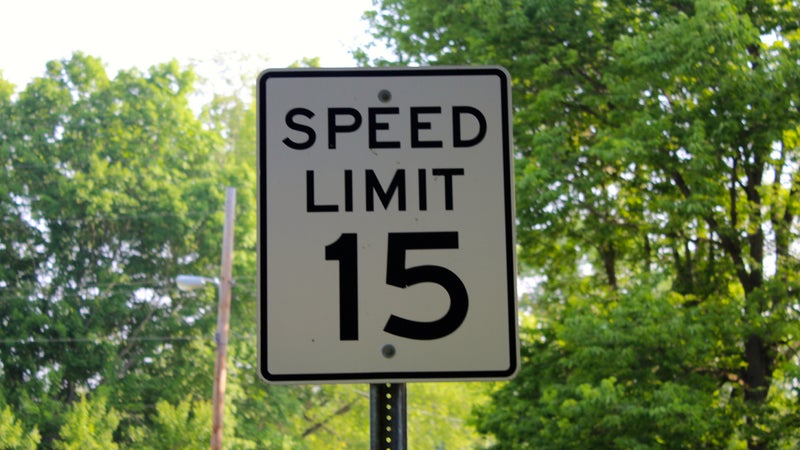Car insurance after a hit-and-run in South Carolina

The Bankrate promise
At Bankrate, we strive to help you make smarter financial decisions. To help readers understand how insurance affects their finances, we have licensed insurance professionals on staff who have spent a combined 47 years in the auto, home and life insurance industries. While we adhere to strict , this post may contain references to products from our partners. Here's an explanation of . Our content is backed by Coverage.com, LLC, a licensed entity (NPN: 19966249). For more information, please see our .
A hit-and-run accident can be both frightening and financially devastating. If you are the victim of a hit-and-run in South Carolina, you may have to file a claim with your own insurance company for damage or injuries—which could increase your premium, even though you are not at fault. If you are the perpetrator of an accident and leave the scene, South Carolina hit-and-run laws are clear that you could face fines and legal consequences in addition to being considered a high-risk insurance applicant.
Hit-and-runs in South Carolina
An accident is considered a hit-and-run in South Carolina when the at-fault driver flees the scene. Not only is this illegal, but if caught, the penalties may include steep fines, jail time and a felony conviction. In 2021, South Carolina recorded 4,925 hit-and-run accidents with 13 fatalities.
Hit-and-run laws in South Carolina
Hit-and-run laws in South Carolina mandate that drivers immediately stop when involved in an accident involving property damage, injury or death. Failing to do so could result in legal penalties. The severity of the consequences largely depends on the bodily injuries involved.
- Minimal bodily injury: The penalty for a hit-and-run may be a misdemeanor conviction, fine of up to $5,000 and 30 days to one year in jail.
- Severe bodily injury: The penalty may be a felony with a fine between $5,000 and $10,000, plus possible jail time of between 30 days and 10 years.
- Death: The penalty may be a felony with imprisonment of between one and 25 years and a fine of up to $25,000.
How does a hit-and-run affect car insurance in South Carolina?
Leaving the scene of an accident in South Carolina is likely to increase your insurance premiums, especially if you are the at-fault driver. The average cost of a full coverage policy in South Carolina is $1,842 per year for an individual with a clean driving record. Following an at-fault accident, the average rate increases to $2,607 for full coverage. Hit-and-runs are considered more severe than standard accidents, so your rate surcharge following a hit-and-run conviction will likely be higher. You may also be dropped by your current insurance carrier or may be required to file an SR-22 form.
Unfortunately, even if you are the victim of a hit-and-run accident, you may see an increased premium at renewal time, especially if you filed a claim on your policy following the accident. If you have an accident forgiveness endorsement on your policy, your rate may not increase.
If your rate does increase following your accident, it might be a good time to shop around. Each carrier rates risk differently, and comparing quotes could reveal whether another company could offer you a lower rate.
What to do after a hit-and-run in South Carolina
Being involved in a hit-and-run accident is a stressful situation. The priority is to make sure you and your passengers are okay and to seek medical attention if you are not. Here’s what else you may want to do:
- Get medical attention: First, evaluate everyone’s safety and determine if there are any injuries. Call 911 so that police and medical personnel are summoned as needed. Getting medical attention may be a smart idea, even if you feel fine at the moment.
- Quickly gather details: If you are able, try to observe any details about who might have hit your vehicle. Things like a license plate number and the make and model of the vehicle can be helpful. Write down anything you observe, so you have the information available later on. If there are witnesses, ask them to stay to tell the police what they saw.
- Cooperate with police: If you called 911, police officers may arrive on the scene. Cooperate with them, have your insurance card handy and answer any questions as best you can.
- Take photos and videos: Without interfering with the police investigation, try to take as many photos and videos as you can to record the conditions surrounding the accident. They may be useful later on as part of the insurance claim.
Frequently asked questions
-
Whether or not your insurance covers a hit-and-run depends on the types of coverage you have on your policy, as well as whether you are the victim or at-fault in the accident. In many cases, collision and uninsured motorist coverage may come in handy. Collision insurance, as the name suggests, helps cover the costs of damage to your vehicle in an accident, even if you aren’t at fault. Uninsured/underinsured motorist coverage is required in SC and may pay for injuries to you and your passengers, as well as damage to your vehicle if you are in an accident where the at-fault party doesn’t have coverage or enough coverage to handle all costs.
-
Car insurance in South Carolina costs an average of $627 per year for state-mandated minimum coverage and $1,842 per year for full coverage, which also includes collision and comprehensive insurance. This is below the national annual averages of $644 for minimum coverage and $2,314 for full coverage. Your own rate is based on a number of factors that are unique to you, such as your credit history, age and driving record, so it will vary from these averages.
-
As is true of almost every state, South Carolina requires individuals to carry a certain amount of coverage to drive legally on public roads. This minimum is usually written as 25/50/25, which translates as follows:
- $25,000 in bodily injury liability per person per accident
- $50,000 in bodily injury liability total per accident
- $25,000 in property damage liability per accident
South Carolina drivers must also have uninsured motorist coverage that is the same as their liability limits. While it may be tempting to choose the cheapest coverage level, many insurance experts recommend that you purchase higher levels than the minimum to give yourself more robust financial protection following an accident.
-
While an accident will typically only impact your car insurance premiums for three to five years in South Carolina, this is entirely dependent on the details and severity of the accident. While an accident likely won’t impact your car insurance forever, a record of the accident may stay on your driving record permanently. For more details, you can contact the South Carolina Department of Motor Vehicles.


